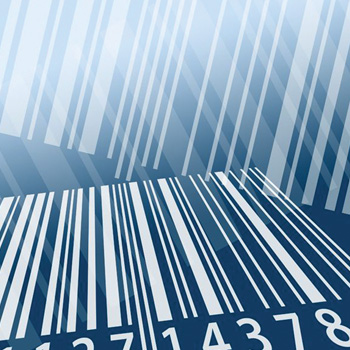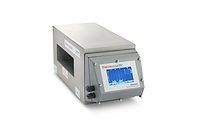To say consumer attitudes and behaviors have changed within the past 4 decades since the advent of the barcode would be an understatement. With newfound empowerment through smartphones and other digital devices, consumers are increasingly curious about every aspect of their food. Where does it come from? How is it made? What does it contain? This call for supply chain transparency has become disruptive for the food industry yet represents many opportunities for those seeking to evolve along with the consumer and not only meet but even exceed their expectations.
Rather than ignore the fact that supply chain business processes and consumer behaviors are now inextricably linked, food industry trading partners are taking a collective look at the benefits of enabling information transparency. With the ultimate goal of enhancing consumer safety and satisfaction, forward-thinking industry participants are collaborating to take a proactive role to drive industry evolution. They are working together to agree upon best practices and standards that reduce redundancy, streamline operations and improve data quality. Let’s examine the current consumer landscape, how it influences industry collaboration and some specific examples of collaborative groups currently in action.
The Impact of the Empowered Consumer
According to research and insights firm IRI, food supply chain transparency is more important than ever to consumers, and retailers that embrace transparency have the opportunity to grow sales up to 25 percent faster than the average pace. The same study noted that within fresh foods, products labeled as organic produce are growing 13 percent a year, and there is also huge growth occurring in “no antibiotic ever” claims—this made up 67 percent of all chicken sales growth alone in 2015. These and other labeling and transparency trends are anticipated to grow in the near future at steady rates, as the industry is still early in the shift toward more conscientious eating.
These figures are indicative of higher consumer expectations in general. They would like to find out from their smartphones where food was grown, show preferences for locally grown produce and respond positively when companies have taken steps to ensure the ethical treatment of animals and fair wages for workers. Consumers also hear about food recalls more often due to increased media attention, social media sharing and generally greater accessibility of information disseminated by food companies. The transparency movement itself has ushered in a new era of food recalls that were simply not part of our cultural dialogue in years past. Not many of us would remember a time growing up when boxes of cereal were recalled due to incorrect gluten-free labeling, for example. For the food industry, many opportunities lie in ensuring consistency and accuracy on the back end of the supply chain to ensure the consumer can trust the information they receive.
The Value of Collaboration
Two years ago, just as retail grocery leaders realized the immense impact the empowered consumer was having on sales, industry stakeholders kicked off a new initiative to collectively align on how they could leverage and extend their investments in global standards to address these new demands. The GS1 US Retail Grocery Initiative[1] was designed to identify emerging industry challenges and facilitate collaboration to develop implementation guidance leveraging GS1 Standards to address key issues and drive supply chain efficiencies—creating a more powerful, singular approach by all stakeholders in the industry.
The platform on which this collaboration is built is the industry’s common use of unique identification of products that can enable better supply chain visibility and food transparency. The cornerstone of the GS1 System of Standards is the Global Trade Item Number® (GTIN). A GTIN uniquely identifies a trade item and can be encoded into a barcode to track individual items as they move through the supply chain. Operating proprietary systems that do not leverage these interoperable standards can mean inconsistent data exchanges between trading partners and can result in incorrect and out-of-date product information at a time when the consumer expects trustworthy information. Industry collaboration helps trading partners agree on scalable, repeatable processes—leading to complete and accurate data, improved visibility and actionable intelligence needed to respond to growing consumer demands.
The GS1 US Retail Grocery Initiative is composed of a cross-section of grocery industry trading partners: suppliers, manufacturers, distributors, wholesalers, retailers, technology providers and other stakeholders who all have adopted GS1 Standards. This initiative is timely as businesses realize that profitable growth can result from effectively leveraging the combined strength of their trading partner network. Through a formal initiative, members have the opportunity to provide their leadership and expertise to shape the future of the industry and to address the most critical industry issues to drive solutions faster and more efficiently. Collectively, the group is focusing its efforts to help industry address the challenges impacting their businesses now and for many years ahead.
The Results of Collaboration
Those that have formalized their collaboration through the initiative have worked together to identify four key areas of the supply chain that need attention and are of top priority for the foreseeable future.
1. Supply Chain Visibility. The need for improved supply chain visibility is becoming more critical to ensuring the accurate identification of products as well as the delivery and tracking of safe foods. With so much national attention on foodborne illness outbreaks, there is a real opportunity for all members of the food supply chain, particularly in fresh foods, to leverage supply chain visibility using standards in support of food safety.
The benefits of an integrated traceability process based on supply chain visibility could represent approximately $3 billion in savings to the fresh foods industry as a whole, according to GS1 US estimates. By breaking down barriers that come with using systems that are not externally linked, food industry trading partners gain unprecedented visibility into their supply chains. Companies can achieve internal process improvements, but the most important element of supply chain visibility is the ability to accurately pinpoint and isolate a potentially harmful product in the event of a withdrawal or recall, or if a product simply comes into question.
The GS1 US Retail Grocery Initiative has a specific work group dedicated to the topic of supply chain visibility. Together, industry stakeholders are working to develop and deploy industry-specific guidance and best practices for managing supply chain visibility and key business processes, including inventory management and recall readiness. While they have made recent progress in creating a dashboard to measure the implementation of barcodes for traceability purposes, it’s important to note that full supply chain visibility using GS1 Standards does not happen overnight. It takes time—even years—for all supply chain partners to fully implement and leverage standards, technological capabilities, workforce training and other factors necessary to realize full food traceability.
2. Operational Efficiencies. There is a need to reduce supply chain inefficiencies to remain competitive and successful in today’s business environment. With a focus on reducing total delivered cost, which is the complete cost of producing and delivering products to customers, a special GS1 US Retail Grocery Initiative work group has been evaluating the best approach for utilizing new technologies and specific business practices to improve operational efficiencies.
By identifying gaps and opportunities where leveraging GS1 Standards can lead to reduced costs and business growth, the operational efficiencies work group is looking to first improve two models of distribution in the retail grocery industry—Warehouse Delivered and Direct Store Delivered networks. It is looking to soon launch a pilot program to test the implementation of GS1 Standards and increased adoption of Advanced Ship Notices to reduce inefficiencies and redundancies in these areas this year. The team also hopes to put out a guidance document in the near future.
3. Product Information and Images. The diversity of requests for sharing product information (including images) with trading partners, consumers and regulators has created a challenging landscape where a large number of suppliers are also aiming to meet various demands in other industry verticals (e.g., the foodservice industry). Within the GS1 US Retail Grocery Initiative, a third work group focuses on providing guidance as to how product data and images for items sold through traditional retail grocery channels and e-commerce can be best used and shared. This includes guidance on how information and images can be exchanged through the Global Data Synchronization Network (GDSN), a central repository of continuously updated product information.
The GDSN enables trading partners to globally exchange standardized product information in an automatic and efficient way. The role of the GDSN is to help ensure data are shared between trading partners in accordance with GS1 Standards and that they connect the physical flow of goods and services to the flow of information. As an example, information such as package measurements, nutrients, ingredients, allergens and whether the food is gluten-free, kosher, halal, vegan or organic for more than 1.5 million food items is synchronized in the network, and the number of items continues to grow every day.
This year, the work group has made great progress in this area through the neutral collaboration opportunities offered through the industry initiative. It has finalized and published the GDSN Retail Grocery Attributes Interactive Spreadsheet Tool,[2] an interactive spreadsheet designed to help companies understand and use mandatory and voluntary attributes for successfully sharing product information via the network. It includes recommendations for food and nonfood items, attribute definitions, examples and other critical attribute information for variants and components—all in an effort to streamline the industry’s approach to data synchronization.
Additionally, since images now play an increasingly significant role in purchasing decisions, the work group has released the Product Images Application Guideline for the Retail Grocery Industry. This was born out of the need for industry to create a more engaging online experience and reduce the incidence of customer frustration that comes with inconsistent or unclear product photos.
The guideline is a resource for standardizing image capture, naming and sharing across multiple platforms and is organized into three sections: general guidelines, a style guide and instructions for publishing images in the GDSN. Within these sections of the guideline, industry stakeholders are provided with collective definitions, business process standards, real-world examples of use and step-by-step guidance on image preparation for upload to the GDSN.
For example, the guideline’s style guide shares best practices for consistently featuring a product’s front, back, left, right, top and bottom image angles. It also provides improper usage examples, such as superimposed images, watermarked images and improperly cropped images. The guideline also makes distinctions for lifestyle product images for various categories including meat, poultry, seafood, produce and more. With consistent image procedures, the industry will be clear on how to create, manage and supply product images for use across retail operations.
4. Data Quality. In addition to finding ways to standardize the exchange of data, food industry stakeholders are also looking at the quality of the data itself. According to data quality pilots with several leading companies over the last couple of years, GS1 US confirmed data accuracy was a growing problem—approximately 50 percent of the data surveyed were inaccurate. This hurts visibility across the supply chain and efficiency in seamless information
sharing.
Best practices on improving data quality are being developed through the GS1 US National Data Quality Program.[3] As part of the program, a manufacturer can take action to rid itself of the same old vicious cycle of passing along data inaccuracies. The GS1 US National Data Quality Program is designed to be universal, to apply to all industry sectors and to help companies enhance their ability to collaborate with their trading partners. Quality data effectively not only allow businesses to share rich product information with one another, but they also deliver on the consumer’s expectation of trustworthy and consistent information.
Essentially, change and success so rarely happen in a vacuum. Ultimately, what these industry collaboration opportunities provide is an open forum to formulate a collective voice to help make product and information flow seamlessly and be more aligned with what the consumer wants. Today’s consumers are loud and clear about what they want—they want to be confident that what they eat is safe and aligned with their beliefs, diets and lifestyles. It’s up to innovative and proactive industry stakeholders to implement the standards that provide the supply chain visibility, operational efficiency and consistent, quality data required to move the industry forward.
Angela Fernandez is vice president of retail grocery and foodservice at GS1 US.
References
1. www.gs1us.org/retailgrocery.
2. www.gs1us.org/industries/retailgrocery/toolsandresources.
3. www.gs1us.org/dataquality.
Leveraging Industry Collaboration for Improved Food Safety and Transparency




